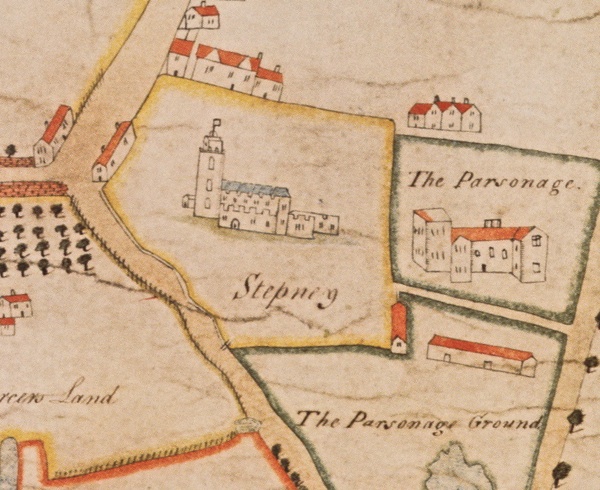Following on from my last post, in which I wrote about the supposed first appearance of the spelling ‘Londors’ – in the record of the 1792 marriage, in Spitalfields, between John Londors and Sarah Reeves:
In this post, I thought it would be useful to chart the changes in the spelling of the surname, and to speculate on what it tells us about the family’s movements in the late 18th and early 19th centuries. In that last post, I noted that the spelling ‘Londors’ is used consistently both by the clerk and by John Londors himself in the record of his marriage to Sarah Reeves. However, in what looks like the record of John’s first marriage, to Hannah Ackerly in 1782, there looks to be some uncertainty about whether his surname should be spelt ‘Londors’ or ‘Lundors’.
It’s interesting to see how the spelling changes among ‘my’ Londors ancestors in the decades that follow. John Londors of Spitalfields was clearly able to write his name in the records, even if his orthography was rather shaky. But my 3 x great grandfather, also John Londors, appears to have been completely illiterate. When he married Mary Ann Schofield at St. Margaret’s, Barking, in 1826, John inscribed his ‘mark’ rather than his signature. The clerk entered his name – and spelt it ‘Landers’, though the image is unclear so it might be ‘Landors’.
The next record I’ve been able to find for the family is for the christening of John and Mary Ann’s daughter Elizabeth in 1833 – when the surname is spelt ‘Launders’ (or possible ‘Laundors’ or even ‘Laundars’). Once again, the clerk seems to have been making a guess at a spelling of which even the child’s parents were unsure.
The spelling only stabilised in the next decade or two – and with the transition to a new generation. In later records relating to my 3 x great grandfather John, the spelling is still flexible, probably reflecting his own illiteracy – and clerical guesswork. Thus in the 1841 census John is Londors (possibly Londers); in 1851 Landors or Landars; in 1861 Londers; and in 1871 Londors again.
However, once John’s children enter the records on their own account, the spelling seems to stabilise and become fixed as ‘Londors’. This partly reflects the fact that some of these children were literate – to the extent of writing their names confidently and legibly, at least. Thus in the record of his marriage to Sarah Brown in 1851, my great-great-grandfather John Schofield Londors clearly signs his name with that spelling, and is obviously able to inform the clerk, who uses the same spelling. John’s younger sister Sarah, who witnessed the marriage, was a much less confident writer, but she too spells her name ‘Londors’.
The same is true of Elizabeth Londors’ marriage to George Smith, also in 1851, when once again both Elizabeth and the clerk use the spelling ‘Londors’. Sister Sarah is again a witness, though this time it’s a little unclear whether she writes ‘Londors’ or ‘Londers’.
Thereafter, almost every record associated with this and later generations of the family uses the modern spelling – especially if those involved are writing it for themselves.
What this means, of course, is that the search for earlier generations of my mother’s family – back beyond my 3 x great grandfather John Londors – needs to widen, to include individuals who may have spelt their name in a variety of ways, or (given that they were probably illiterate) had it spelt differently by those writing on their behalf. The records are full of people with the name Lander, Linder, and similar. However, the addition of a final ‘s’ is distinctive and less frequent, so it probably makes sense to confine the search to those with the surname Londers, Landers or Launders. There are plenty of those in the Spitalfields/Shoreditch/Stepney area from which I now believe my family originated, and I’ll be exploring their records in later posts.



Sometimes seeing the different spelling variations as recorded by different people can tell you something about the way it was said – it’s pronunciation. Our names were around long before standardized spelling.
A very good post.
Regards,
Theresa (Tangled Trees)
Thanks, Theresa. You’re right that many of our surnames were spelt ‘flexibly’, certainly up to the early 19th century – and some more flexibly than others, which certainly seems to be the case with my mother’s maiden name. It does make tracing ancestors very difficult though!